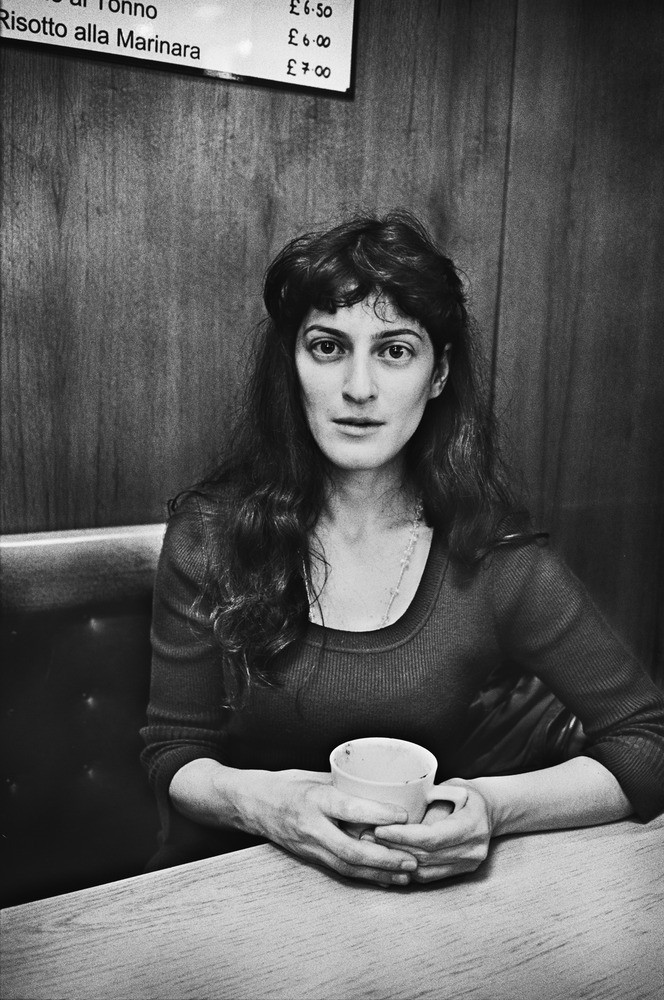
“My photography is not ‘brain photography’. I put my brain under the pillow when I shoot. I shoot with my heart and with my stomach.” – Anders Petersen
Anders Petersen is one of the most influential contemporary master photographers. He shoots with a simple point-and-shoot film camera (Contax T3) and shoots soulful black and white images which he refers to as “personal documentary.” He makes himself and the people he meets as his main subjects, and he shoots from the heart.
A photograph without emotion is dead. The problem that a lot of photographers make is that they try to become too analytical with their photography. They are too preoccupied with composition, framing, form, nice light, and they forget the most important thing of making a memorable image: creating an image that has heart, soul, and passion.
So when you’re out shooting, try not too be too analytical. Shoot from your intuition and your guts. If you find anything even remotely interesting, don’t self-censor yourself. Don’t let your brain tell you: “Don’t take that shot, it is boring, and nobody will find it interesting.” Take the photograph anyways, because you can always edit it out (remove it) later.
When is it time to become analytical?

“It is more after when I am shooting when I am looking at my contact sheets, and then I try to analyze and put things together.” – Anders Petersen
Shoot from your gut when you’re out on the streets, but use your brain when you’re at home and editing your shots. Analyze your images after-the-fact as a post-mortem, and learn how to “kill your babies” (your weak photos that you are emotionally attached to, but you know aren’t great photos).
Separate the shooting and editing sides of your photography. They use different parts of your brains, and if you try to do both of them at the same time, you will fail. As a practical tip, turn off your LCD screen when shooting, and refrain from looking at your images immediately. Let your shots “marinate” by not looking at them until a week after you have made your images.
Letting a photograph “marinate”
I shoot both film and digital, but one of the biggest advantages of shooting film is that you’re forced not to look at your photos immediately after you’ve shot it. I generally don’t get my film processed until 6 months-1 year after I’ve shot it. This helps me truly help disconnect myself emotionally from my shots, which allows me to look at my photos more objectively.
For digital I find it a lot harder to let my shots “marinate,” as I am prone to “chimping” (looking at your LCD screen immediately after you’ve taken photographs).
For this photograph above, I saw this woman juxtaposed against this billboard behind her in London. I got close to her, and took two photos: both with a flash. One of them she was looking away, and one she was looking directly at me.
At first I didn’t think that it was an interesting shot, but then I let the shot “marinate”— and the longer I sat on the image, the more I ended up liking it. I also ended up showing the photograph to a couple of my close friends, who all agreed that it was a strong image.
For some shots, the longer you let your shots “marinate,” the more you like them. For others, the longer you let your shots “marinate,” the less you like them. Imagine oil and water in a bottle. You shake the bottle hard, and they are both mixed. But the longer you wait, the oil will soon rise to the top (your good photos), while the water will sink to the bottom (your weak photos).
Learn From the Masters
If you want to learn more practical wisdom from the masters of street photography, read more below:
- Alec Soth
- Alex Webb
- Anders Petersen
- Andre Kertesz
- Bruce Davidson
- Bruce Gilden
- Constantine Mano
- Daido Moriyama
- Dan Winters
- David Alan Harvey
- David Alan Harvey (Part 2)
- David Hurn
- Diane Arbus
- Dorothea Lange
- Elliott Erwitt
- Eugene Atget
- Eugene Smith
- Garry Winogrand
- Helen Levitt
- Henri Cartier-Bresson
- Jacob Aue Sobol
- Jeff Mermelstein
- Joel Meyerowitz
- Joel Sternfeld
- Josef Koudelka
- Lee Friedlander
- Magnum Contact Sheets
- Magnum Photographers
- Mark Cohen
- Martin Parr
- Mary Ellen Mark
- Rene Burri
- Richard Avedon
- Richard Kalvar
- Robert Capa
- Robert Frank
- Saul Leiter
- Sebastião Salgado
- Stephen Shore
- The History of Street Photography
- Todd Hido
- Tony Ray-Jones
- Trent Parke
- Vivian Maier
- Walker Evans
- Weegee
- William Eggleston
- William Klein
- Zoe Strauss

